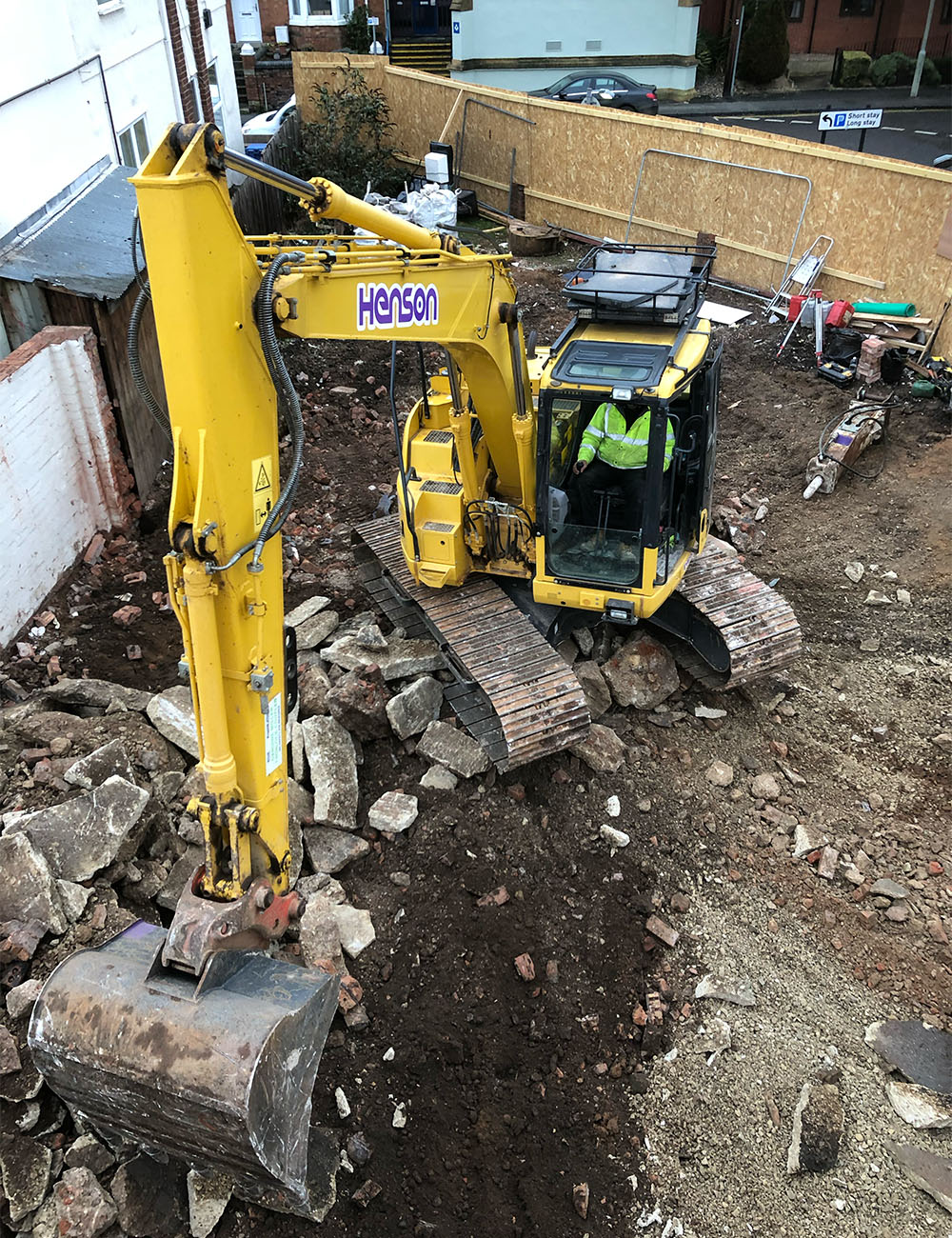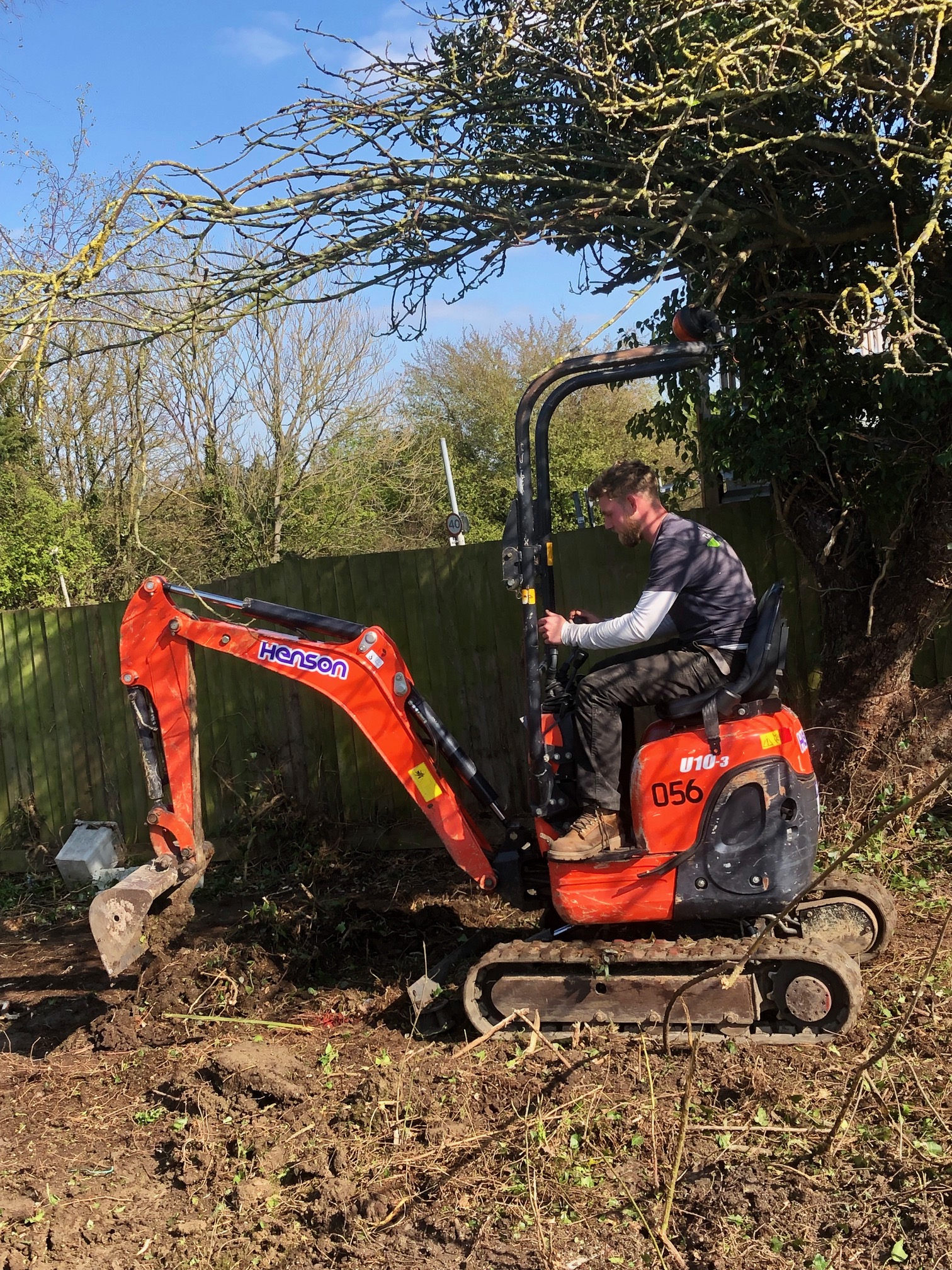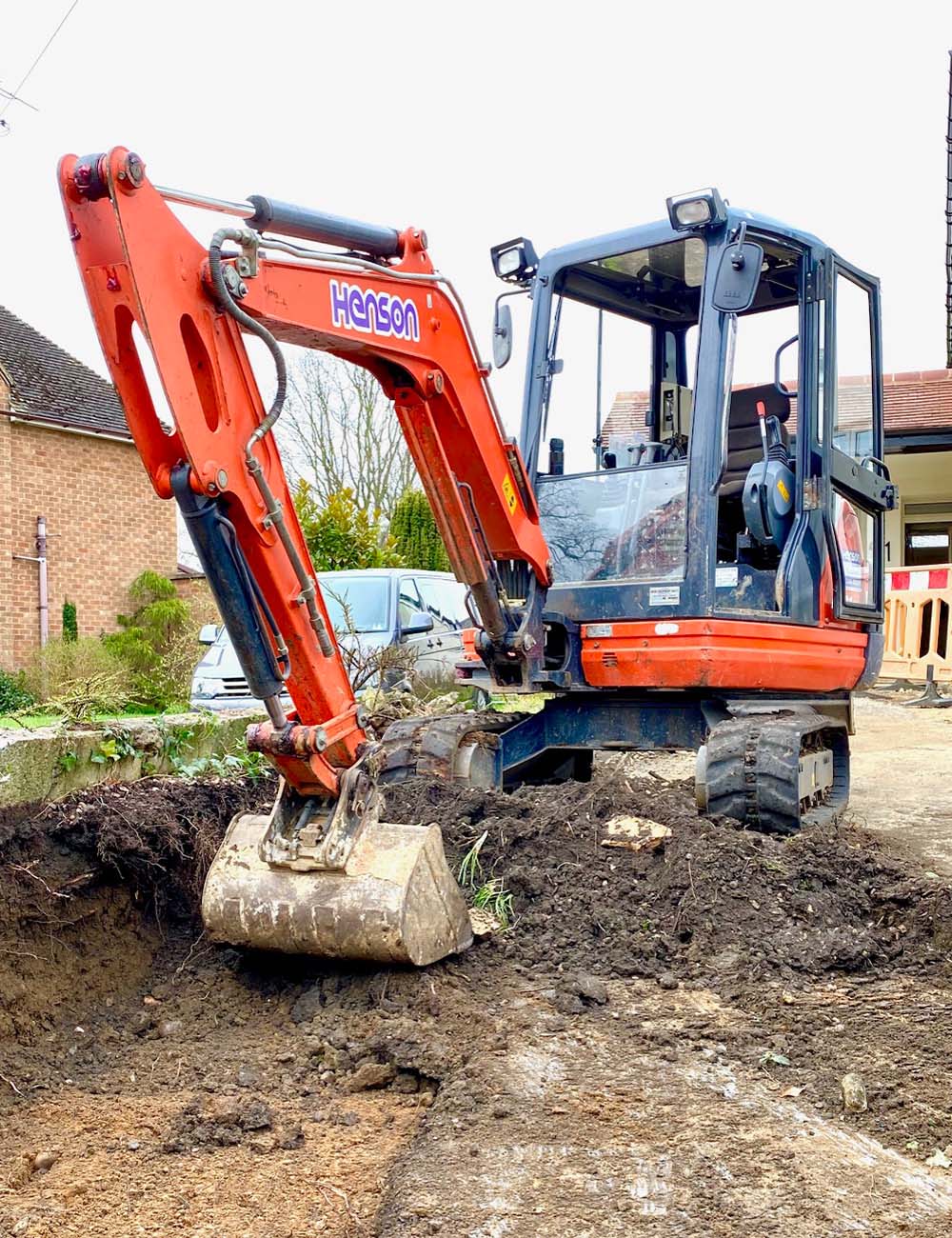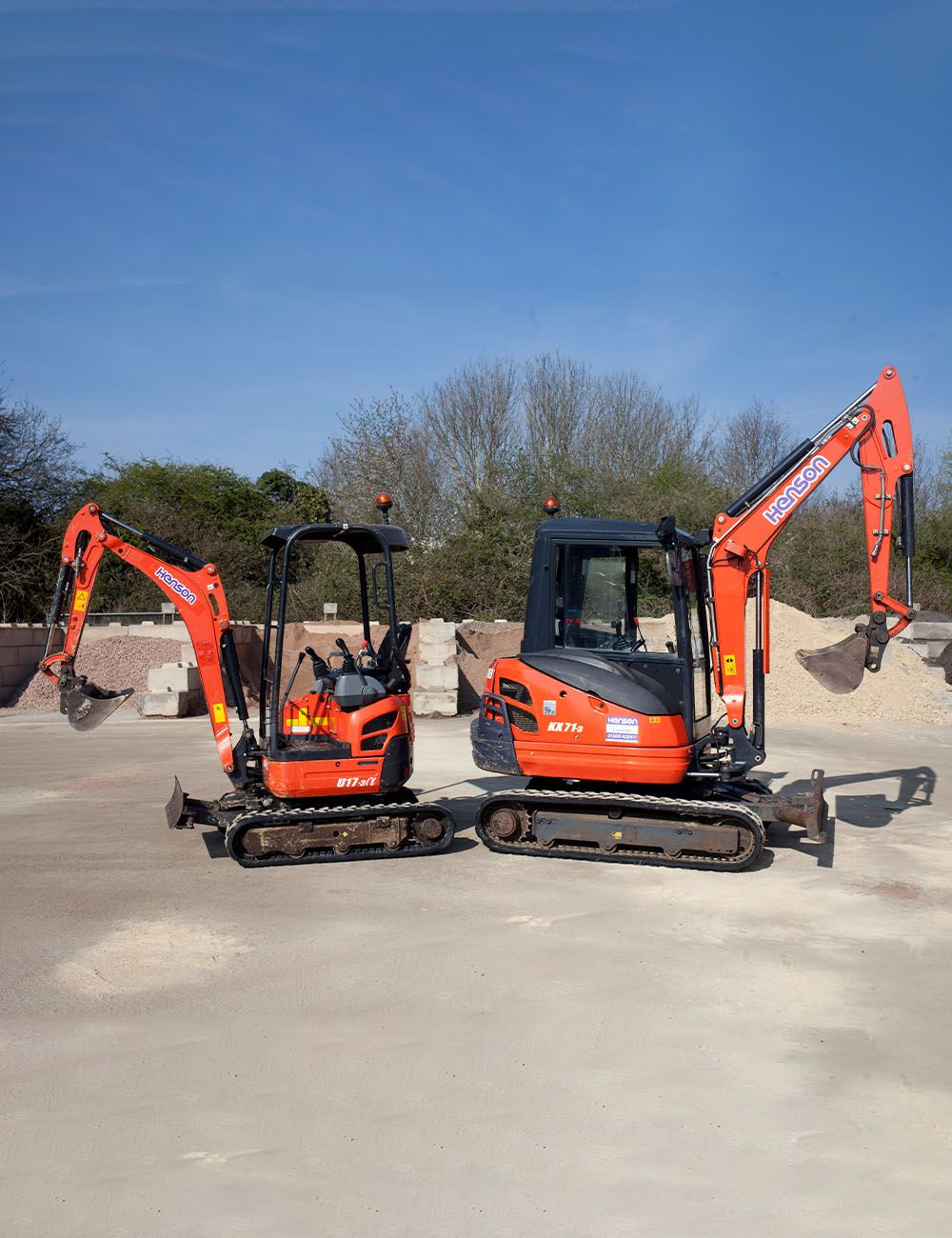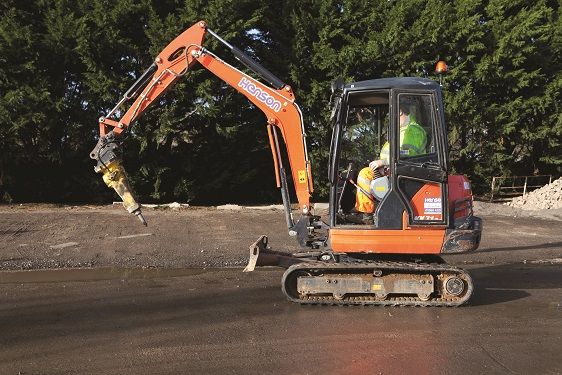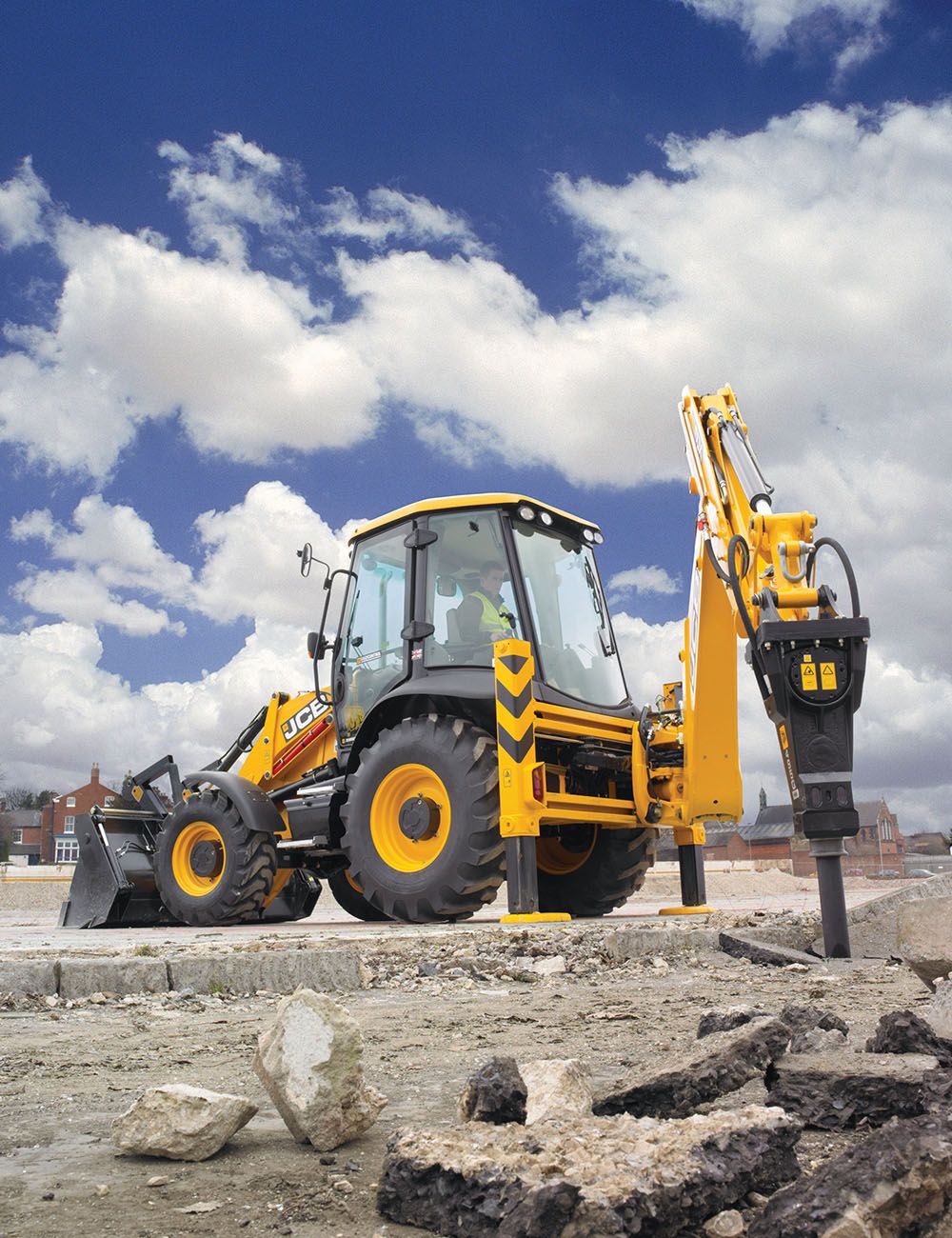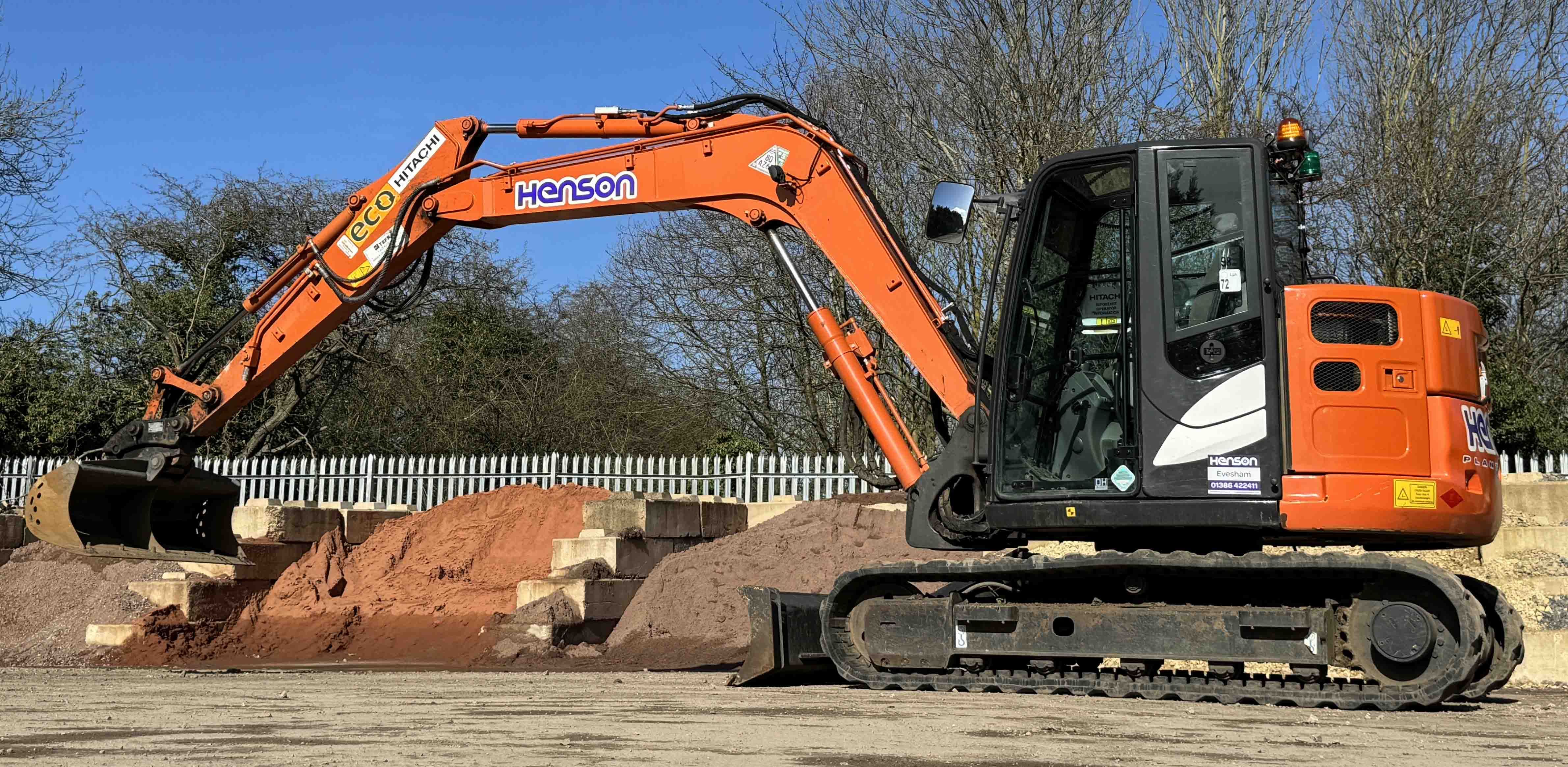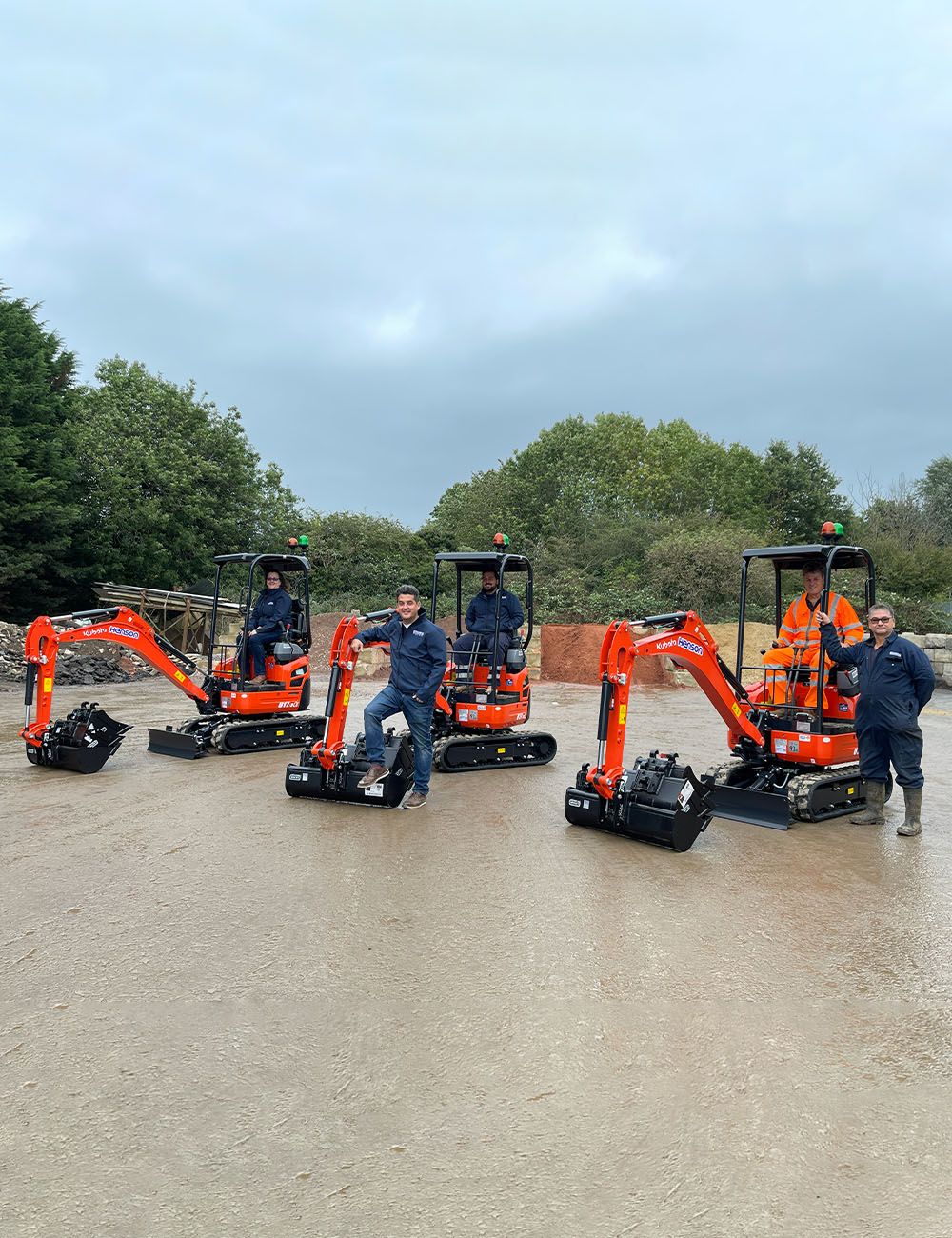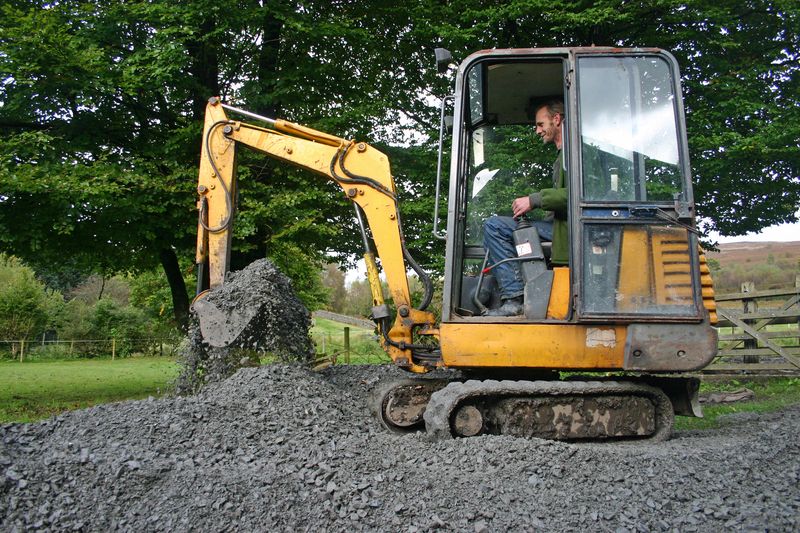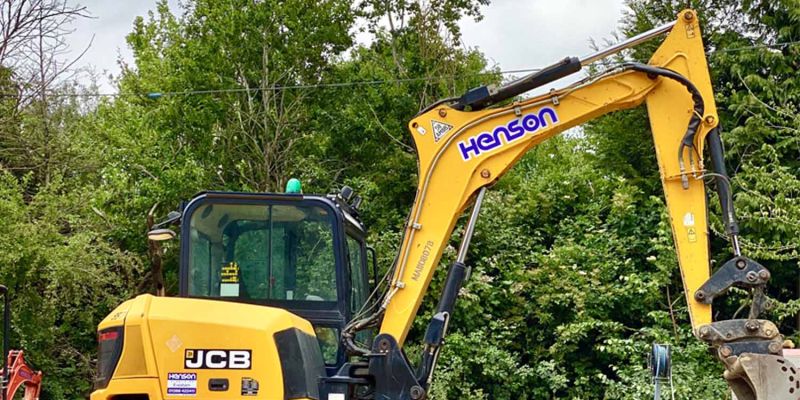
What is the Best Excavator for My Back Garden?
Blog
Reshaping your garden with precision and efficiency is an important task. Like many of us, using an excavator in our daily lives is not common, so how are you supposed to know where to start?
In this article, we will take a look at the types of excavators that are available on the market that are appropriate for back gardens everywhere. From enhancing efficiency to embracing precision and unlocking time-saving advantages, let's jump into excavators and how they can benefit your next garden project.
Excavators and How They Work
Excavators are heavy construction equipment consisting of a boom, dipper (or stick), bucket, and cab mounted on a rotating platform called the house. These versatile machines are commonly used in construction, mining, landscaping, and other industries for digging trenches, foundations, holes, and general earthmoving.
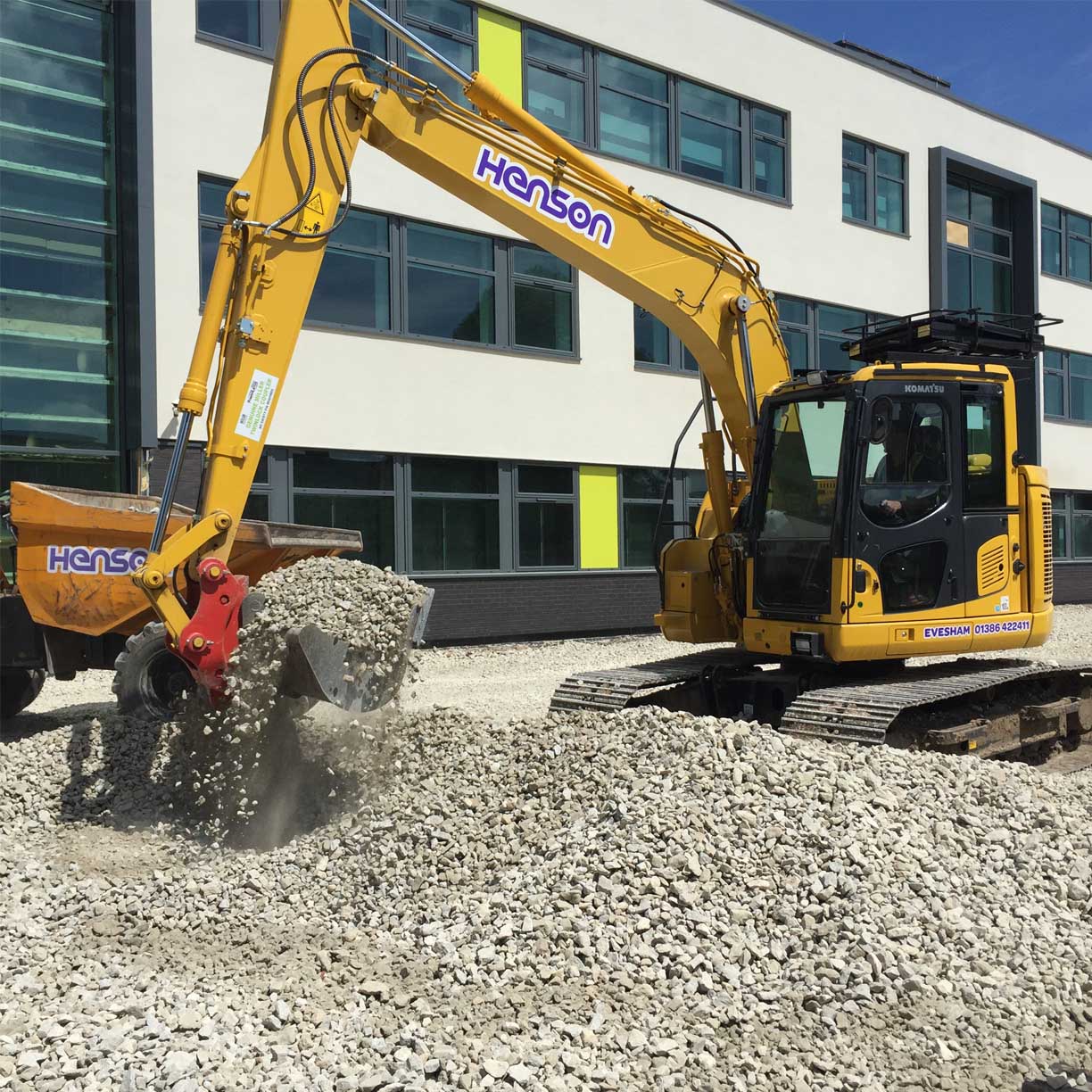
Key Features of Excavators:
- Boom: The boom is an extendable arm that lifts and lowers the bucket or attachment. It provides the excavator with reach and height for various digging depths.
- Dipper/Stick: The dipper, also known as the stick, is the part of the excavator that connects the boom to the bucket. It controls the horizontal movement and depth of the bucket during excavation.
- Bucket: The bucket is the attachment at the end of the dipper/stick used for scooping, lifting, and moving materials such as soil, rocks, or debris. Buckets come in different sizes and types for various applications.
- Cab: The cab is where the operator sits and controls the excavator. It typically includes the controls for operating the boom, dipper, bucket, and machine movement.
- Rotating Platform (House): The house is the base of the excavator that rotates 360 degrees, allowing the operator to work in different directions without repositioning the machine.
Functions and Applications:
- Excavation: Excavators are primarily used for digging and moving earth, making them essential for trenching, foundation digging, and site preparation.
- Material Handling: Excavators can lift and move heavy materials using attachments such as grapples, thumbs, or rippers, expanding their versatility beyond excavation.
- Demolition: Excavators equipped with demolition attachments, such as shears or breakers, can efficiently dismantle structures and remove debris on construction sites.
- Landscaping: Excavators play a crucial role in landscaping projects by shaping terrain, creating ponds, and installing drainage systems with precision and efficiency.
Excavators come in various sizes and configurations to suit job requirements, from mini-excavators for compact spaces to large hydraulic excavators for heavy-duty tasks. Their ability to perform a wide range of tasks with speed and precision makes them indispensable machinery in the construction and earthmoving industries.
What sizes do excavators come in?
- Excavators come in a range of sizes to accommodate various projects, from small residential tasks to large-scale construction and mining operations. Here are the typical sizes of excavators:
Mini Excavators:
- Weight Class: Typically up to 6 tons.
- Benefits: Compact size for maneuvering in tight spaces, ideal for landscaping, trenching, and utility work in residential areas.
Small Excavators:
- Weight Class: Ranging from 6 to 10 tons.
- Benefits: These compact excavators are suitable for light to medium excavation projects, offering a balance of power and agility.
Medium Excavators:
- Weight Class: Between 10 to 20 tons.
- Benefits: These standard excavators have increased digging depth and reach and are suitable for larger residential projects, site preparation, and general construction tasks.
Large Excavators:
- Weight Class: From 20 to 100+ tons.
- Benefits: High performance and capacity for heavy-duty job site excavation, mining, and major construction projects where significant digging depth and power are required.
Ultra-Large Excavators:
- Weight Class: Exceeding 100 tons.
- Benefits: These are the largest excavator options designed for massive earthmoving, mining, and infrastructure projects, offering unparalleled digging capabilities and productivity.
What types of excavators are there?
Excavators come in various types and sizes, each designed for specific applications and project requirements. Let's explore some common types of excavators available:
Wheeled Excavators
- Equipped with wheels instead of tracks for greater mobility.
- Ideal for road construction, utility work, and projects requiring frequent relocation.
Crawler/ Tracked Excavators
- Features tracks for stability and traction on uneven terrain.
- Versatile machines are used in digging, demolition, and heavy construction projects.
Suction Excavators
- Utilises high-powered suction to remove materials from the ground.
- Efficiently extract soil, debris, and liquids without traditional digging methods.
Long Reach Excavators
- Equipped with an extended arm and boom for increased reach.
- Suited for deep excavation, dredging, and demolition tasks requiring extended capabilities.
Dragline Excavators
- Heavy-duty machine with a long boom and bucket suspended by a cable.
- Primarily used in large-scale mining and civil engineering projects for massive excavation tasks.
Skid Steer Excavators
- Combines features of a skid steer loader and an excavator for versatility.
- Compact design for manoeuvrability in tight spaces, offering efficiency and ease of operation.
Each type of excavator serves specific purposes and offers unique advantages tailored to different project requirements.
Selecting the right excavator type based on the scope of work, site conditions, and mobility needs ensures optimal performance and efficiency in various construction, landscaping, and excavation projects.
Factors to Consider for a Garden Project
When planning your landscaping project in your back garden (that requires an excavator), it's essential to carefully evaluate several key factors to ensure you select the right equipment for the job. Here are the crucial considerations that homeowners should keep in mind before choosing an excavator for their back garden renovation:
Size
- Space Constraints: Assess the size of your back garden to determine the appropriate excavator size that can manoeuvre effectively within the available space.
- Access Points: Consider the entry points to your back garden and choose an excavator size that can access the area without causing damage to existing structures or landscapes.
Power
- Digging Depth and Power: Evaluate the digging depth requirements of your project and select an excavator with sufficient power to handle the soil conditions in your back garden.
- Engine Performance: Consider the horsepower and hydraulic capabilities of the excavator to ensure it can efficiently complete the tasks required for your landscaping project.
Attachments
- Versatility: Explore the range of attachments available for the excavator, such as buckets, grapples, and augers, to determine if they align with the specific needs of your back garden project.
- Attachment Compatibility: Ensure that the excavator you choose can easily accommodate various attachments to enhance its functionality and versatility during landscaping activities.
Manoeuvrability
- Swing Radius: Assess the excavator's swing radius to determine whether it can maneuver smoothly within the confined spaces of your backyard without causing disruptions.
- Track Configuration: The excavator's track width and configuration should be considered to ensure optimal stability and maneuverability on different terrains commonly found in residential back gardens.
By carefully considering size, power, attachments, and manoeuvrability, homeowners can make informed decisions when selecting an excavator for their back garden landscaping projects.
Choosing the right excavator that aligns with the project's specific requirements can contribute significantly to the success and efficiency of the renovation endeavours, ultimately transforming your back garden into a picturesque oasis of beauty and functionality.
So, what excavators are a good choice for your back garden?
When considering excavators for work in a residential back garden, it's essential to prioritise manoeuvrability, compact size, and minimal disruption to the surrounding area. Here are some types of excavators that are well-suited for residential back garden projects:
Mini Excavator
Mini excavators, known for their compact size and lightweight operating weight design, are a great option for small to medium-scale residential projects. They feature a narrow width and reduced tail swing, making them easy to manoeuvre in tight spaces such as back gardens. These excavators are ideal for landscaping, trenching, tree planting, and small excavation projects, all without causing significant damage to the surrounding area.
Micro Excavator
Micro excavators, even smaller than mini excavators, are ultra-compact machines specifically designed for highly confined spaces. These excavators are lightweight and agile, making them perfect for backyard projects with limited access or space constraints. They are well-suited for tasks such as digging trenches, levelling ground, and conducting light excavation work in residential gardens.
1. Compact Track Loader with Excavator Attachment:
A compact track loader equipped with a detachable excavator attachment offers versatility for backyard projects. This machine features tracks for low ground pressure and stability, coupled with an excavator attachment designed for digging and material handling tasks. The combination provides flexibility for activities like trenching, grading, and material movement in residential gardens while minimising impact on the terrain.
2. Towable Mini Excavator:
Towable mini excavators are compact machines that can be transported to residential sites using a trailer. These excavators are lightweight and portable, enabling convenient movement between different garden locations. They are ideal for smaller excavation tasks, such as digging foundations, installing utilities, and handling various projects in residential back gardens.
Choosing the correct type of excavator for your back garden depends on your local dealer, the specific requirements of your project, available space, and desired outcomes. Opting for a compact, manoeuvrable excavator ensures efficient and precise work while minimising disruption to your garden landscape.
Tips for Excavator Home Projects
Operating an excavator in your back garden requires careful attention to safety protocols to ensure your well-being, that of others, and the property. Here are essential safety tips and guidelines for homeowners operating excavators in their back gardens:
Undertaking home projects with an excavator can be a rewarding experience, but it's crucial to prioritise safety, planning, and proper execution to ensure successful results. Here are some tips to consider for excavator home projects:
Safety First:
- Protective Gear: Wear appropriate safety gear, including helmets, gloves, and steel-toed boots.
- Site Inspection: Check for underground utilities and hazards before starting excavation work.
Plan Your Project:
- Site Preparation: Clear the work area of obstacles and mark boundaries for excavation.
- Utility Locations: Identify and mark the locations of buried utilities to avoid accidental damage.
- Project Scope: Define the goals and scope of the project to maintain focus and efficiency.
Equipment Maintenance:
- Regular Checks: Inspect the excavator for any signs of wear or damage before each use.
- Fluid Levels: Check and maintain proper fluid levels, including fuel, hydraulic fluid, and coolant.
- Greasing: Keep moving parts lubricated to ensure smooth machine operation.
Operational Tips:
- Start Slow: Familiarise yourself with the controls and practice in a clear area before starting the project.
- Control Movements: Use precise movements and avoid sudden jerks to prevent damage to the surroundings.
- Stay Alert: Be aware of your surroundings, including other workers, bystanders, and potential hazards.
Final Considerations
In conclusion, selecting the best excavator for your back garden involves carefully considering various factors such as the project scope, available space, and specific requirements. For most residential garden projects, mini excavators are an ideal choice due to their compact size, manoeuvrability, and versatility in tackling the landscaping, trenching, and small excavation tasks with minimal impact on the surrounding area.
Ultimately, by understanding your project needs, considering the type of work involved, and selecting the right excavator based on factors like size, mobility, and functionality, you can transform your back garden with precision and ease. With the right excavator (whether it be JCB, Volvo construction equipment or other reliable brands) your garden projects can be completed effectively, enhancing your outdoor space's aesthetic appeal and functionality.
Here at Henson Plant, we want to help you with your next project. Our team is here to help you choose the correct equipment for success from all types of plant hire construction machinery. We offer both operated plant hire and regular plant hire for maximum productivity for all your current and future products. To get in touch or make an enquiry please fill out the form below so that a member of our team can get in touch with you.
Articles
